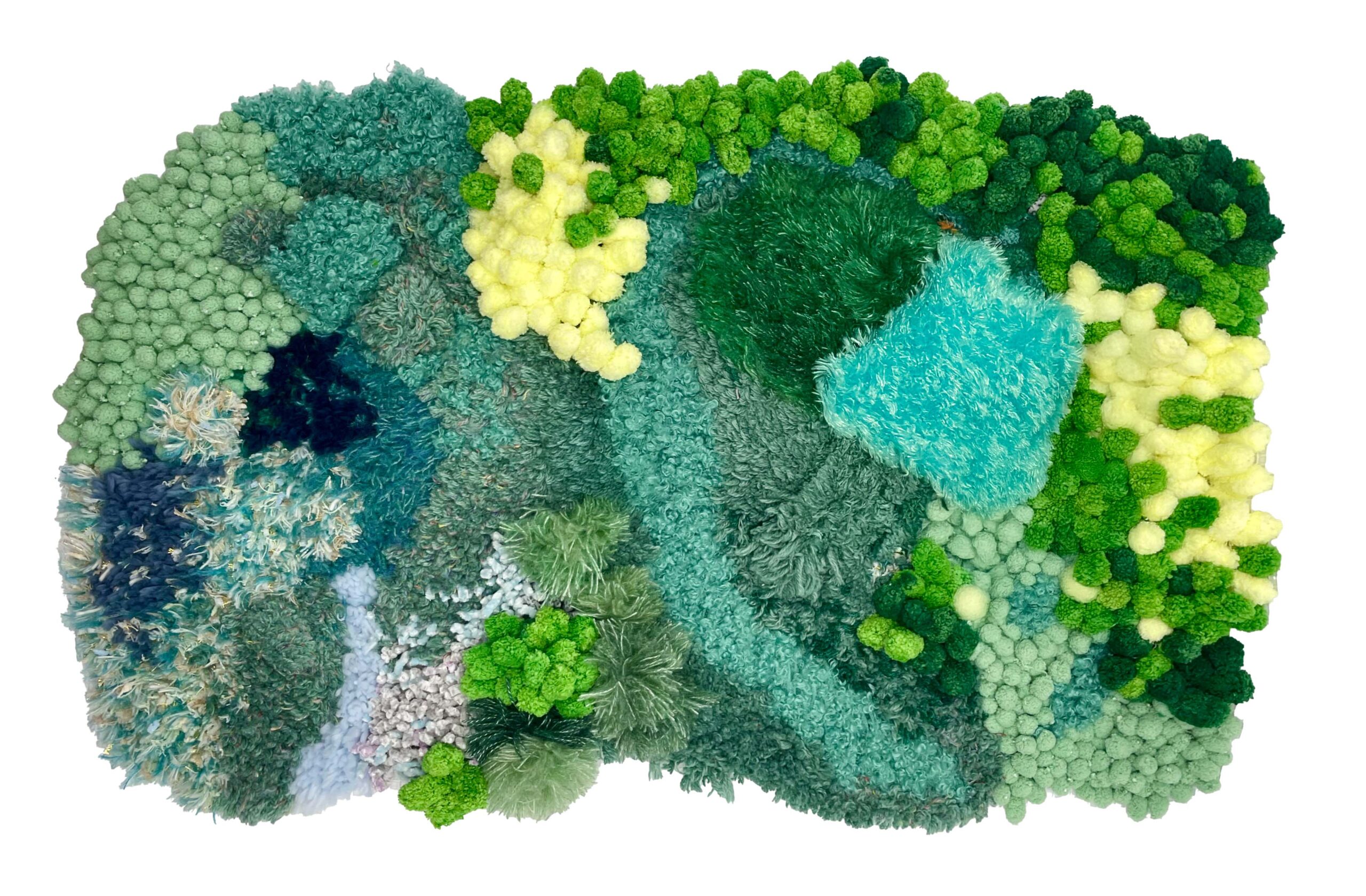Touch Reset:
Designing Interactive Smart Textiles for Emotional Balance
From remote work to the rise of ChatGPT, the changes we have seen in the post-pandemic era have led to unprecedented levels of isolation for students and workers which in turn has profoundly impacted their mental health. In particular, research shows/according to a study done by the NIH, female students report experiencing higher levels of anxiety. Research also shows that limited access to outdoor environments creates a sense of nature-deficit that worsens stress levels. This thesis explores the potential of e-textiles with augmented-touch can help individuals reduce stress and achieve emotional balance, essentially demonstrating how these innovative materials can be used for self intervention on behalf of mental health.
The thesis highlights the role of touch, a primary language of compassion, in stress regulation. Touch has been shown to increase oxytocin levels, reduce blood pressure, and lower heart rate, helping to manage cortisol production and buffer stress. Additionally, the somatosensory system, which connects the brain and body, processes touch and enhances tactile and emotional experiences. E-textiles, with their soft textures and interactive designs, naturally invite touch, encouraging gestures that automatically evoke emotional responses. These gestures, whether deliberate or freestyle, produce sensory feedback, emotions, and thoughts. This makes e-textiles an effective medium for integrating natural, healing elements into daily life.
This thesis also draws on research that shows the benefits of nature on improving mental health. Natural environments, such as green spaces or water features, have long been associated with reducing psychological and physiological stress. They lower cortisol levels, heart rate, and blood pressure while offering restorative cognitive benefits, including improved mood and enhanced social relationships. The material mimics these environments through visual and textural features like blue and green colors that evoke nature, lighting sensors, calming scents, and visually dynamic textures that invite touch. Through this design, e-textiles can trigger physiological responses linked to emotional well-being.
Ultimately, the research proposes that e-textiles provide an innovative way to empower individuals in managing stress and anxiety, especially in isolated environments. By enhancing emotional awareness and enabling self-regulation, e-textiles offer a promising approach to improving mental well-being. This self-care model serves as a valuable tool for students and others looking for ways to navigate the mental health challenges of an increasingly digital and disconnected world.
